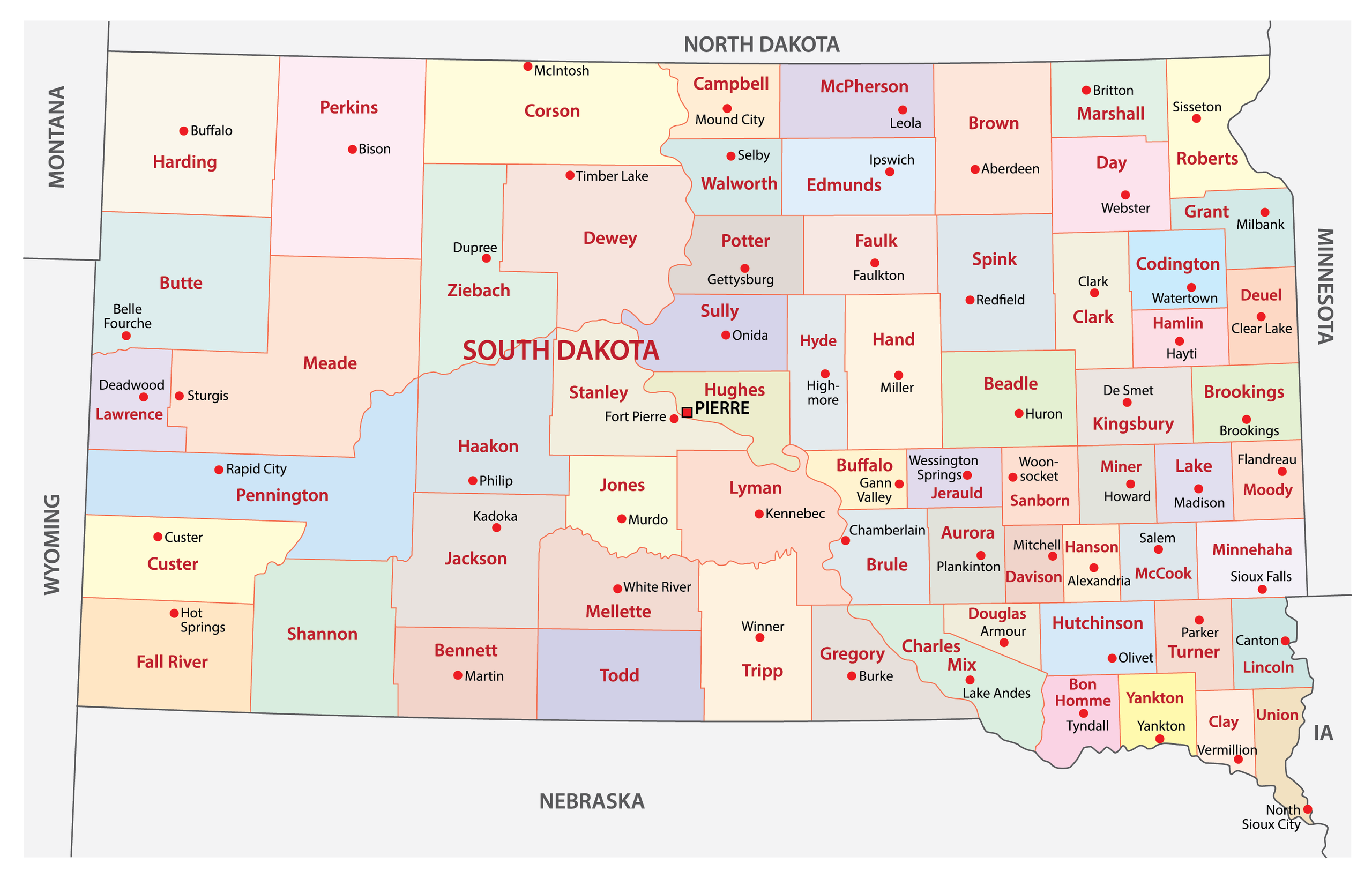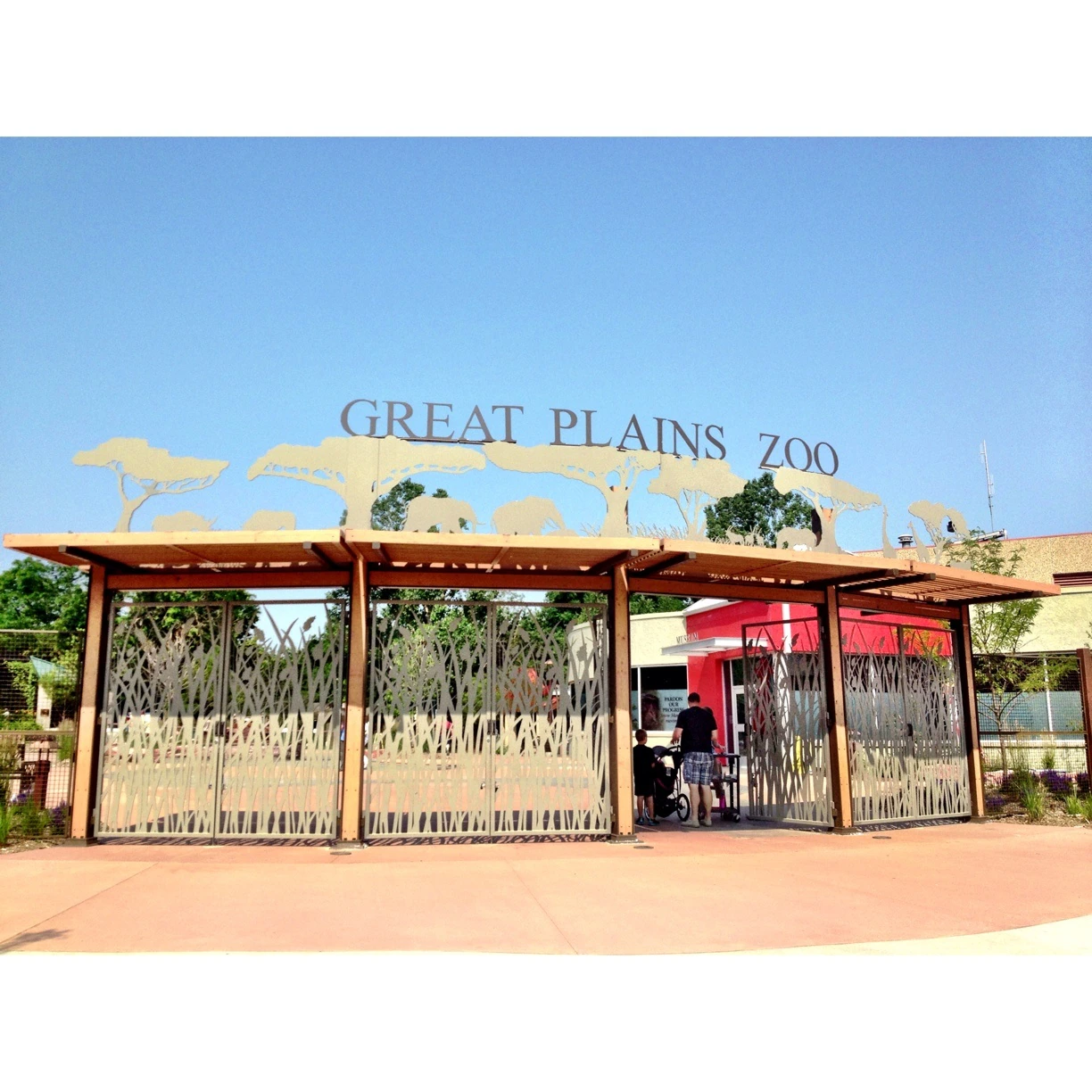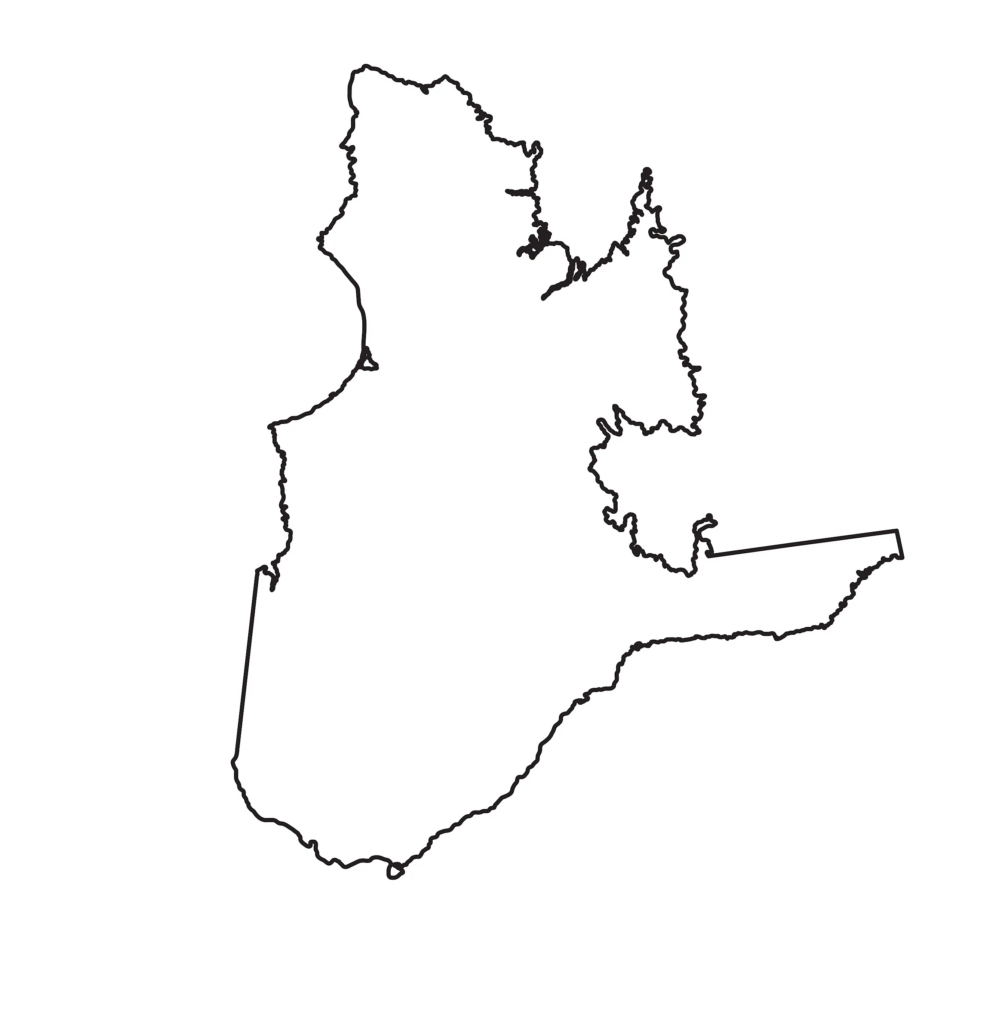Introduction
South Dakota, a state in the Midwestern region of the United States, is renowned for its diverse landscapes, rich history, and unique cultural heritage. This guide delves into the geography, history, and key facts about South Dakota, providing an in-depth understanding of the state’s significance and attractions.
Geography of South Dakota
Location and Boundaries
South Dakota is bordered by North Dakota to the north, Minnesota and Iowa to the east, Nebraska to the south, and Wyoming and Montana to the west. The state is geographically divided by the Missouri River into two regions commonly referred to as East River and West River, each with distinct characteristics.
Major Landforms
The Black Hills
Located in the southwestern part of the state, the Black Hills are a small, isolated mountain range known for their stunning beauty and significant cultural heritage. This area is home to Mount Rushmore, a monumental sculpture featuring the faces of four U.S. presidents.
The Badlands
The Badlands National Park in southwestern South Dakota features dramatic landscapes with deep gorges, sharp ridges, and rock formations. The park is also known for its rich fossil beds.
The Great Plains
Covering most of the state, the Great Plains offer expansive prairies and rolling hills, which are ideal for agriculture. This region is characterized by its fertile soil and is a significant contributor to the state’s economy.
Climate
South Dakota experiences a continental climate with four distinct seasons. Summers are typically hot and humid, while winters can be extremely cold and dry. The state also experiences a range of weather conditions, including thunderstorms and tornadoes.
History of South Dakota
Pre-Colonial Period
Before European settlers arrived, South Dakota was inhabited by various Native American tribes, including the Sioux, Arikara, and Cheyenne. These tribes had rich cultural traditions and relied on hunting, fishing, and agriculture.
European Exploration and Settlement
The first European explorers to reach the area were the French, in the early 18th century. The region became part of the United States through the Louisiana Purchase in 1803. The Lewis and Clark Expedition passed through the area in 1804-1806, mapping the territory and establishing relations with Native American tribes.
Statehood
South Dakota became the 40th state of the United States on November 2, 1889. The statehood movement was fueled by the discovery of gold in the Black Hills and the subsequent influx of settlers seeking fortune and new opportunities.
20th Century to Present
The early 20th century saw the development of infrastructure and agriculture in South Dakota. The construction of Mount Rushmore between 1927 and 1941 brought national attention to the state. In recent years, South Dakota has diversified its economy, focusing on tourism, finance, and technology.
Economy of South Dakota
Agriculture
Agriculture is a cornerstone of South Dakota’s economy. The state is a leading producer of corn, soybeans, wheat, and livestock. The fertile plains and favorable climate conditions make it ideal for farming and ranching.
Tourism
Tourism is a significant economic driver, attracting millions of visitors annually. Major attractions include Mount Rushmore, Badlands National Park, Custer State Park, and the annual Sturgis Motorcycle Rally.
Manufacturing and Industry
South Dakota has a growing manufacturing sector, producing goods such as machinery, food products, and electronics. The state also has a burgeoning financial services industry, with Sioux Falls emerging as a major hub.
Energy
South Dakota is investing in renewable energy, particularly wind power. The state’s vast open spaces and favorable wind conditions make it an ideal location for wind farms.
Culture and Demographics
Population
As of the latest census, South Dakota has a population of approximately 900,000 people. The population is predominantly rural, with the largest cities being Sioux Falls and Rapid City.
Ethnic Composition
South Dakota has a diverse population, with significant Native American communities, particularly from the Sioux tribes. There are also communities of European descent, including German, Norwegian, and Irish immigrants.
Language
English is the predominant language spoken in South Dakota. However, there are efforts to preserve and promote Native American languages, such as Lakota.
Religion
Christianity is the dominant religion in South Dakota, with a significant number of residents identifying as Protestant. There are also Catholic communities and other religious groups, including those practicing Native American spiritual traditions.
Education
South Dakota places a strong emphasis on education, with numerous public and private schools, colleges, and universities. The University of South Dakota and South Dakota State University are the state’s major higher education institutions.
Major Cities and Attractions
Sioux Falls
Overview
Sioux Falls, the largest city in South Dakota, is located in the southeastern part of the state. It serves as a cultural, economic, and healthcare hub.
Attractions
- Falls Park: A beautiful park featuring the city’s namesake waterfalls.
- Great Plains Zoo: Home to a wide variety of animals and interactive exhibits.
- SculptureWalk: An annual exhibit of outdoor sculptures displayed throughout downtown.
Rapid City
Overview
Rapid City, known as the “Gateway to the Black Hills,” is the second-largest city in the state. It is a major tourist destination due to its proximity to several national landmarks.
Attractions
- Mount Rushmore: The iconic monument featuring the faces of four U.S. presidents.
- Dinosaur Park: A historic park with life-sized dinosaur sculptures.
- Journey Museum: A museum dedicated to the history and culture of the Black Hills region.
Pierre
Overview
Pierre, the state capital, is located along the Missouri River. It is one of the smallest state capitals in terms of population.
Attractions
- South Dakota State Capitol: A beautiful historic building with guided tours available.
- Oahe Dam: One of the largest earth-rolled dams in the world, providing recreational opportunities.
Fun and Interesting Facts
- Mount Rushmore: The faces on Mount Rushmore are each about 60 feet tall.
- Crazy Horse Memorial: A nearby monument still under construction, intended to be the world’s largest sculpture.
- Corn Palace: Located in Mitchell, the Corn Palace is decorated annually with murals made from corn and other grains.
Maps of South Dakota
Political Map
A political map of South Dakota shows the state’s counties, major cities, and significant highways. It highlights the division between East River and West River and the location of key cities such as Sioux Falls, Rapid City, and Pierre.
Physical Map
A physical map of South Dakota showcases its diverse landscapes, including the Black Hills, Badlands, and the Missouri River. It illustrates the topography and natural features that define the state’s geography.
Tourist Map
A tourist map of South Dakota highlights major attractions, including national parks, monuments, and historic sites. It provides an overview of the state’s key points of interest for visitors.
Commonly Asked Questions
What is the main holiday in South Dakota?
The main holiday in South Dakota, as in the rest of the United States, is Independence Day on July 4th, celebrated with fireworks, parades, and various public events.
How many holidays do South Dakotans celebrate?
South Dakotans celebrate a variety of holidays, including federal holidays such as New Year’s Day, Memorial Day, Labor Day, and Thanksgiving, as well as state-specific events like Native American Day.
What is the state flower of South Dakota?
The state flower of South Dakota is the American Pasque flower (Pulsatilla hirsutissima), also known as the May Day flower.
What are some unique traditions in South Dakota?
One unique tradition in South Dakota is the Sturgis Motorcycle Rally, an annual event that attracts motorcycle enthusiasts from around the world. Another is the Buffalo Roundup in Custer State Park, where thousands of buffalo are herded.
Why is Mount Rushmore significant?
Mount Rushmore is significant because it features the monumental carvings of four U.S. presidents: George Washington, Thomas Jefferson, Theodore Roosevelt, and Abraham Lincoln. It symbolizes American history and democracy.
What are the major economic activities in South Dakota?
The major economic activities in South Dakota include agriculture, tourism, manufacturing, and finance. The state is a leading producer of corn, soybeans, and livestock.
How does the climate in South Dakota affect daily life?
The climate in South Dakota, with its hot summers and cold winters, influences daily life in terms of clothing, activities, and agriculture. Residents experience a wide range of weather conditions, from summer thunderstorms to winter snowstorms.
What are some popular outdoor activities in South Dakota?
Popular outdoor activities in South Dakota include hiking, fishing, hunting, and camping. The state’s diverse landscapes, including the Black Hills and Badlands, offer numerous opportunities for outdoor recreation.
What is the cultural significance of the Black Hills?
The Black Hills hold cultural significance for both Native American tribes and settlers. For Native Americans, the Black Hills are sacred land. For settlers, it became a focal point during the Gold Rush and the development of the region.
How has South Dakota contributed to American history?
South Dakota has contributed to American history through events like the Gold Rush, the construction of Mount Rushmore, and the rich cultural heritage of its Native American tribes. The state’s historical landmarks and natural beauty continue to draw visitors and researchers alike.
Conclusion
South Dakota is a state rich in history, culture, and natural beauty. From the majestic Black Hills and the iconic Mount Rushmore to the expansive Great Plains and the intriguing Badlands, the state offers a unique blend of attractions and experiences. Understanding its geography, history, and economy provides a comprehensive view of what makes South Dakota a significant and fascinating part of the United States. Whether you are a resident, a visitor, or someone interested in American history and geography, South Dakota has something valuable to offer.
- South Dakota Maps & Facts - June 15, 2024
- Quebec Maps & Facts - June 15, 2024
- Austria Maps & Facts - June 15, 2024




